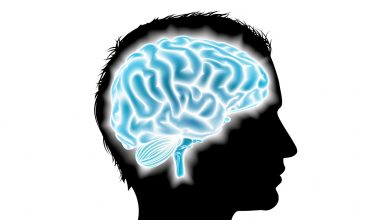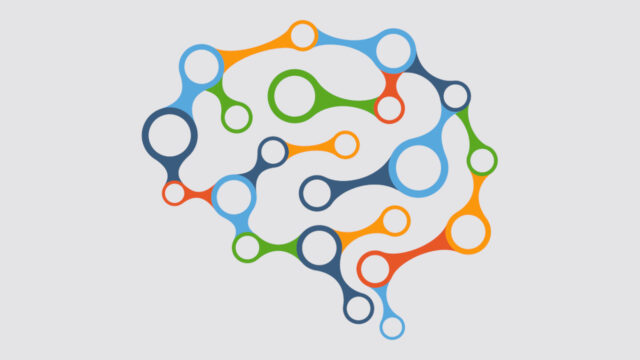
Four building blocks of systems thinking
By Derek Cabrera and Laura Cabrera. Originally published on the Integration and Implementation Insights blog.
Systems thinking itself is a complex adaptive system. Supported by empirical evidence, DSRP theory describes 4 simple rules that dynamically combine to explain the complexity of physical, natural, and social systems. Awareness of these patterns can help us to solve many societal and environmental problems.
We briefly present DSRP theory which describes four universal patterns and their underlying elements – identity (i) and other (o) for Distinctions (D), part (p) and whole (w) for Systems (S), action (a) and reaction (r) for Relationships (R), and point (ρ) and view (v) for Perspectives (P).
We describe these four building blocks and show how they can be mixed and matched. We conclude with some additional key aspects of the theory.
The building blocks
Distinctions (Identity-Other)
An essential element of systems thinking is making distinctions (identity-other) between and among things and ideas. How we draw or define the boundaries of an idea or a system of ideas is an essential aspect of understanding. Whenever we draw a boundary to define a thing, that same boundary defines what is not the thing (the “other”). Systems thinkers consciously use distinctions to challenge existing norms, labels, and definitions, and to identify biases in the way information is structured.

Systems (Part-Whole)
Systems thinkers organize things and ideas into part-whole systems to make meaning. They know that changing the way ideas are organized changes meaning itself. The act of thinking is defined by splitting things up or lumping them together. Systems thinkers constantly consider context by asking “What is this a part of?” in order to see how things fit into larger wholes than is the norm.
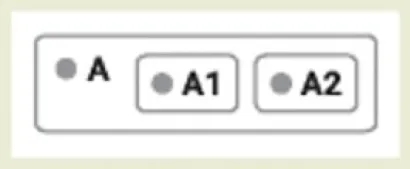
Relationships (Action-Reaction)
Systems thinkers identify relationships (action-reaction) between and among things and ideas. We cannot understand much about anything, including a system, without understanding how parts and wholes are related. Relationships come in all types: causal, correlation, direct/indirect, etc., Systems thinkers use relationships to show dynamical interactions between things and ideas, including feedback loops to show reciprocal relations.

Perspectives (Point-View)
Systems thinkers look at ideas from different perspectives (point-view) and understand that every time we make a distinction (including identifying relationships and systems), we are always doing so from a particular perspective. Systems thinkers use perspectives to rethink distinctions, relationships, and/or systems. They move beyond human or animal perspectives (i.e., “perspectives with eyes”) by taking conceptual perspectives (i.e., seeing a phenomenon from the perspective of an idea or thing).
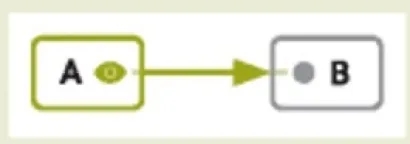
Mixing and matching the building blocks
Even though the four patterns distinctions (D), systems (S), relationships (R), and perspectives (P) are very simple, the brain is very complex, so it can do these four things simultaneously and in combinations that create amazing patterns of thought. Systems thinkers mix and match as follows:
- Mix R and D: make a relationship a distinction, which means to define relationships as ideas or things rather than just noting connections between objects;

- Mix R, D, and S: after identifying relationships, “zoom into them” by deconstructing them into part-whole systems;
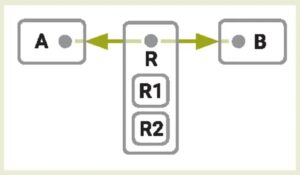
- Mix S and R: see the organization of parts and the relationships between them in novel ways;
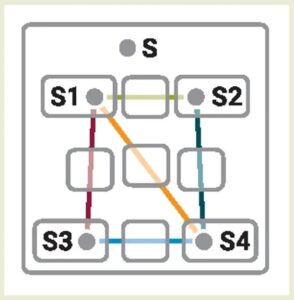
- Mix S and R: compare the relationship between two wholes by comparing the relationships between their parts (ie., a “Relationship Channel” or “R-channel”);
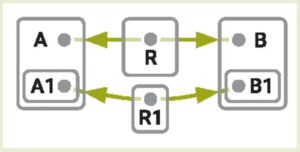
- Mix P and S: Break down perspectives into sub-perspectives in order to avoid the homogenous perspective thinking error (i.e., assuming any group is characterized by a single perspective);
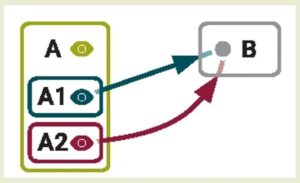
- Mix P, S, R, and D: see that distinct objects and ideas can be grouped/related in various ways according to a perspective, thereby avoiding thinking errors brought about by categorizing;
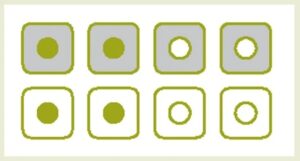
- Mix P, S, R, and D: realize every complex topic or phenomenon is a massively relational, perspectival network where
1. every relationship can be made a distinction, and
2. where every element must be made a distinction, could be a system in and of itself, could be a perspective (point or view), and could be related to, or the relationship between, other elements.
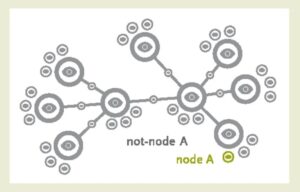
Concluding remarks
The DSRP patterns and their underlying elements are universal in both cognitive complexity (mind) and material complexity (nature). DSRP Theory provides a basis for systems thinking or cognitive complexity as well as material complexity (systems science).
What do you think? Do these ideas resonate with you? Do you have examples of how the DSRP theory has played out in your own research?
This blog post is taken, with some modifications, from Derek Cabrera and Laura Cabrera (2018). Four building blocks of systems thinking. Frameworks for Transdisciplinary Research Framework #4, GAIA, 27, 2: 200. (Online – open access) (DOI): https://doi.org/10.14512/gaia.27.2.3
To find out more:
Cabrera, D. and Cabrera, L. (2015). Systems thinking made simple: New hope for solving wicked problems. Odyssean: Ithaca, New York, United States of America.
Cabrera, D. and Cabrera, L. (2022). DSRP theory: A primer. Systems, 10, 26. (Online – open access) (DOI): https://doi.org/10.3390/systems10020026
Biographies:
 |
1. Derek Cabrera PhD is a systems scientist at Cornell Institute for Public Affairs at Cornell University in Ithaca, USA, as well as co-founder and senior scientist at Cabrera Research Lab. He is credited with discovering universal organizing rules of systems and systems thinking (DSRP theory) and organizations (VMCL (Vision, Mission, Capacity, Learning) theory). |
 |
2. Laura Cabrera PhD is a visiting lecturer at Cornell Institute for Public Affairs at Cornell University in Ithaca, USA. She is co-founder and Chief Research Officer at Cabrera Research Lab and the Co-principal Investigator and acting Executive Director of ThinkWater, a United States Department of Agriculture (USDA)-funded initiative designed to implement systems thinking nationwide in water-based research, extension, and education. |
Article source: Four building blocks of systems thinking.


